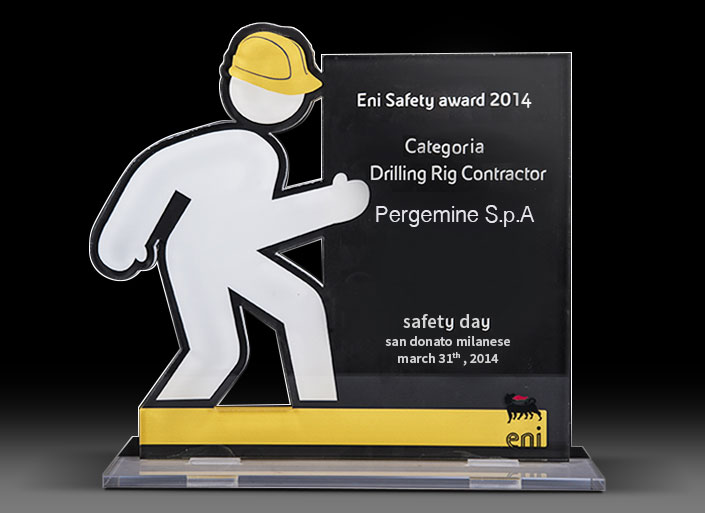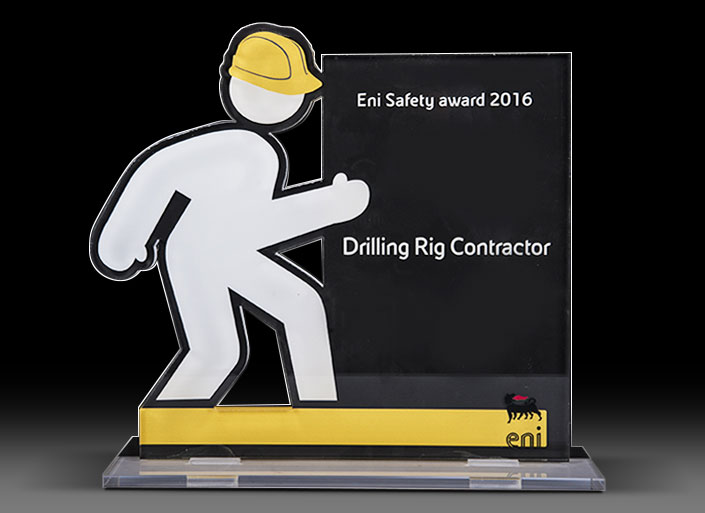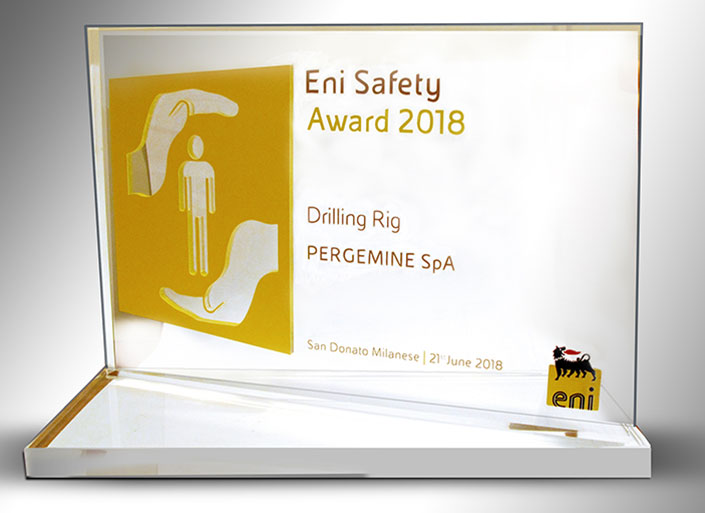QHSE policies
Our culture: Safety, Health, Environment
Every single accident can be prevented
All accident and occupational diseases can be prevented; Safety is the responsibility of each one of us; safety is a work condition; training is an essential element to achieve safe workplaces; the most critical element of success for a Safety programme is people training; safe work practises must be strengthened; all unsafe actions and conditions must be promptly corrected; management must be directly accountable for the prevention of accidents and occupational diseases; prevention of occupational diseases and accidents is advantageous in terms of business; investigating accidents, occupational diseases and incidents with potential accident risk is essential.
Pergemine acknowledges that the protection of the health of its employees and collaborators, as well as that of everyone involved in its activities in various capacities, is integral part of the company’s objectives and programmes. Management and every operational area are responsible and made aware regard achieving high-level results.
Health is top priority and an essential parameter to reach higher quality in our performance. “Medical surveillance”, in constant collaboration with the “Competent Physician” and the Protection and Prevention Services, based on specific knowledge of the production units and hazardous situations, implements measures to protect workers’ health and their psychophysical integrity.
In compliance with law provisions in force on this subject, our company works with associations and competent authorities in developing regulations ever more pertinent to the health needs of the workers. It acts in conjunction with local communities, makes always known its commitment towards the workers, the community and the environment and pledges to seek constant improvements of its own actions in protecting the employees and third parties working with it.
Pergemine operates a Safety & Health management system as a tool of prevention, integration and constant improvement, aimed at reaching excellence in processes and results, through the engagement of motivated and competent resources. Improvement and expansion projects of the management system are also executed, with the goal of strengthening the top-level ranks reached. Improved results are coupled with the increasing value of the operations performed.
its responsibility, authority and leadership, which through periodic reviews, update and improve the management system;
planning and designing activities;
review of the documentation and of the pertaining data;
adequacy of business supplies;
management of remarks, problems and nonconformities;
identification and implementation of corrective and preventive actions to improve processes;
personnel training, information awareness and skills;
system use of checks and audits;
preparedness and response to emergencies;
timely communication and based on objective data;
periodic risk assessment to set out future objectives.
Top Management promotes the commitment to constant improvement of the matters related to the health and safety of the workers;
procedures and technical operational instructions regulating phases, activities and processes consider Safety and Health measures components of such activities;
continuous comparison with the best external practises is carried out to align internal operation to the best international technical, production and Safety & Health norms;
a relationship of collaboration is established with vendors and subcontractors, which goes beyond the mere contract and control aspects, with the awareness of pursuing the common interest;
re-examination and innovation activities promote constant improvement through scrutiny, re-engineering and improvement of processes, on the base of past performances. The ongoing investment in targeted research and development allows an efficient and timely transmission of the results into the operating process;
the staff is encouraged to participate in identifying procedures fit to improve health and safety in operations. This takes place through periodic meetings held at the workplace and through written suggestions during safety meetings;
the results of this commitment lead to advanced solutions for proper management of the drilling Rigs and the workshop, to save energy in production processes and to reduce environment impact in the areas of operation.
Environment
The objectives
Pergemine is aware that activities directly and indirectly connected to providing drilling contractor services to third parties, affect the environment. Thus, it has decided that such activities must be carried out with maximum respect of the surrounding environment and it has enacted all the technical and organizational precautions designed to contain the impact to acceptable and compatible levels. Pergemine’s objective is therefore to reach and constantly improve a high-level standard on the matter of protecting the environmental and community.
Pergemine has developed for some years now initiatives meant at researching and applying technologies with lesser environmental impact and energy savings in reference to its own environmental responsibilities, identifiable by the contract that sets the relation between the Customer and Pergemine.
With this statement, Pergemine pledges to develop an Environmental Management System at its Rig locations is compliant with UNI EN ISO 14001 (2015 edition). A well structured system integrated with the whole set of management activities, made of a series of procedures, methodologies and operational controls on pollution prevention systems, and focused on reaching specific objectives in hierarchical order. This is how Pergemine wants to implement and maintain a series of activities fit to protect the environment in which it operates in every relevant aspect, by monitoring each production process in consideration of their environmental impact.
Pergemine’s policy on the environment aims at keeping an active Environmental Management System, in compliance with legal standards and contractual provisions, characterized by the definition of specific objectives and goals on environmental matters that Pergemine can control or can influence directly or indirectly, aiming at obtaining the UNI EN ISO 14001 certification from an independent qualified third party board.
research ahead of time the environment in which it is going to operate; know the relations between its own operations, own sites and the environment;
enact all measures of prevention and reduction of the impact and control of the environmental risk, environmental monitoring in terms of the activities carried out, emergency actions in case of accidents, using the best technology available, effective on the environment and reasonable from the stand point of business;
develop a kind of management integrated with the Customer’s responsibilities regarding the environment;
monitor, verify and improve its own the Environment Management System.
Involvement of staff
Reaching the objectives defined by Top Management can be achieved only with the collaboration of all the staff. This is why Pergemine adopted a series of procedures set to protect the environment. The task for each staff member, and in particular of senior and junior managers for the respective area of responsibilities, is to verify and periodically ensure that the principles set are respected. Moreover, Pergemine wants to develop awareness in each staff member, so that he/she becomes an active subject in the protection of the environment.
Monitoring and control
responsibility, authority and leadership, also through periodic reviews, update and improve the management system;
planning and scheduling the activities;
review of the documentation and of the pertaining data;
adequacy of business supplies;
management of remarks, problems and nonconformities;
identification and implementation of corrective and preventive actions to improve the processes;
personnel training, information awareness and skills;
system use of checks and audits; preparedness and response to emergencies;
timely communication and based on objective data.
Results achieved
Electrification of the Rigs. Contrary to the traditional Rigs where electricity is provided via generator units powered by diesel engines, the Rigs used in Val D’Agri use power grid electricity for their operations: no CO2 emission in the atmosphere;
Soundproofing: measures to limit the equipment noise impact have been adopted. For example, generator units, air compressors, winches and machinery in general used in carrying out routine activities identifiable as potential noise emission sources have undergone verification and were made compliant with the regulations in force by planning adequate protections.
Pergemine was the winner of ENI Safety Award 2018



